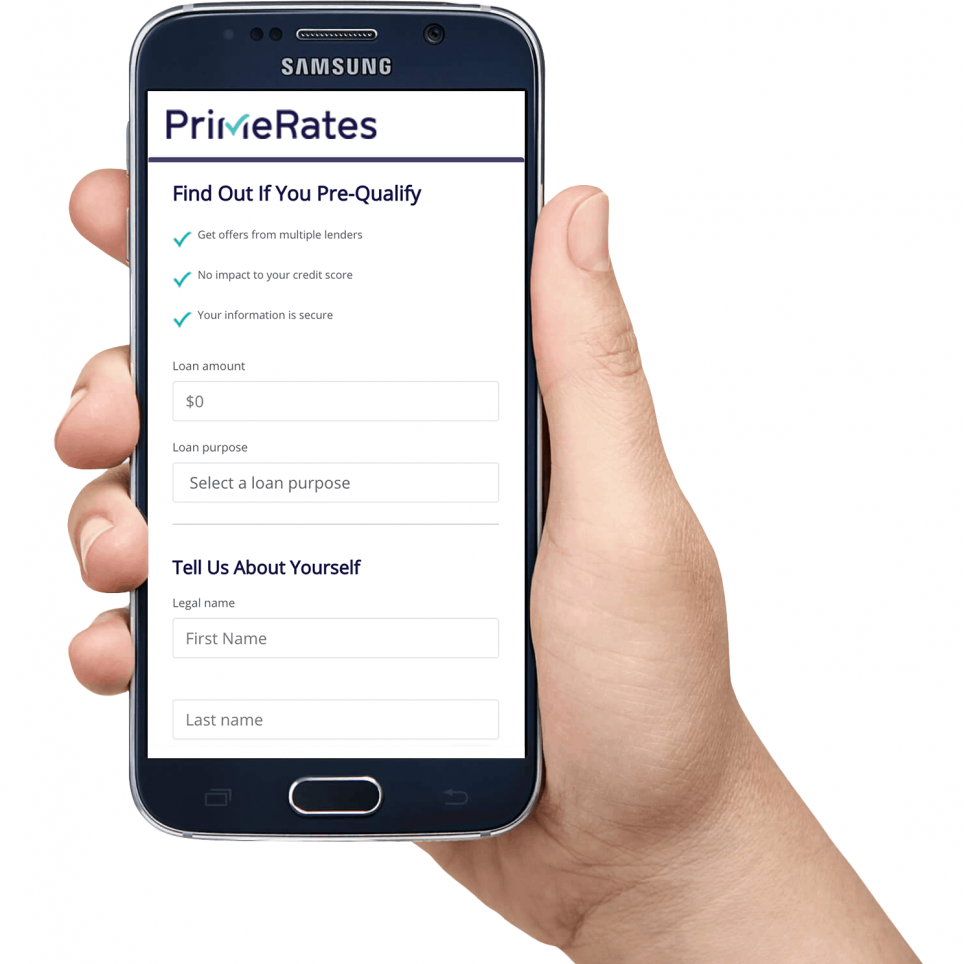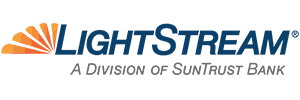Fortunately, there are ways to give your kitchen a facelift even if you’re not flush with cash. This article will tell you everything you need to know about how to finance a kitchen remodel.
How Do You Finance a Kitchen Remodel?
When it comes to paying for a kitchen remodel, relatively few home-owners can afford to fork over a lump sum of cash to cover the costs. That’s where kitchen remodel financing comes into play. Kitchen finance plans come in a variety of forms from numerous different sources. (More on those later.) For the most part, however, the process of applying for a loan and repaying it is relatively similar regardless of which lending route you pursue.
What Kind of Loan Do I Need for a Kitchen Remodel?
The type of loan you need for a kitchen remodel depends on several different factors, including your credit score, how much money you’re seeking, and the amount of cash you have to put toward the project. Based on these considerations among other criteria, one type of loan might be a better fit for you than another. For instance, you might be eligible for a lower interest rate with a home equity line of credit (HELOC) than you would be with a bank loan or a credit card. For those reasons, a HELOC loan might be the exact loan you need.
Can You Get Kitchens on Finance?
Yes! Depending upon your creditworthiness and how much money you require for a remodel, it’s entirely possible to have a whole new kitchen built into your home and you can pay for it over time.
What Credit Score Do You Need to Get a Kitchen Remodel Loan?
Different lenders have different criteria when it comes to qualifying for a kitchen remodel loan. In general, individuals with scores above 750 will qualify for more favorable interest rates and more flexible terms, while applicants with scores in the low 600s will face higher interest rates and more rigid repayment options.
How to Finance A Kitchen Remodel
As mentioned earlier, there are several ways to go about acquiring the funds necessary for a kitchen remodel. Here’s a quick look at each of them along with a brief breakdown of their advantages and drawbacks.
Personal Loans
If you’re a relatively new homeowner who hasn’t developed much equity yet, you might consider a personal loan to cover the costs of your kitchen remodel. Depending on how extensive of a remodel you’re contemplating, a large personal loan can have a drastic impact on your credit score.
Pros
- Won’t affect your mortgage in any way
- Interest rates are lower than credit cards
- High loans amounts give your project room to grow
Cons
- Rates aren’t as low as equity-based arrangements
- Terms are fixed and there may be fees and penalties
- Can significantly lower your credit score, even if you never miss a payment
If you’re considering a personal loan to cover the cost of your kitchen remodel, here are three lenders worth looking at.
Personal Loans For Good Credit
LightStream
BestEgg
Personal Loans For Average Credit
Prosper
LendingPoint
LendingClub
LendingClub is a leader in the personal loan space and among the most popular options for Americans seeking access to cash.
- APR: 6.95%-35.89%
- Loan Amounts: Average loan is $14,700
- Repayment Terms: 3-5 years
Pros
- High loan amounts can cover most remodels
- APRs are much lower than many similar lenders
- Repayment terms are reasonable
Cons
- Harder to qualify for
- Only the most creditworthy individuals will get the best rates
- Will likely lower your credit score for several months or more
NetCredit
NetCredit specializes in personal loans that can be used for a variety of purposes.
- APR: 34%-155%
- Loan amounts: $2,600 to $10,000
- Loan terms: Six months to four years
Pros
- Lower maximum APRs than other lenders
- Good option to smaller projects
- You don’t need a great credit score to qualify
Cons
- NetCredit doesn’t operate in many areas of the United States
- Borrowers have a maximum of four years to repay their loans
- Loan amounts might not be enough to cover the entire project
Credit cards
Credit cards are usually considered one of the less affordable avenues to take when it comes to kitchen remodel finance options. That’s because credit card companies have a reputation for charging greater interest rates than other lending institutions charge. Here’s a quick look at some common pros and cons of using credit cards to pay for a kitchen remodel.
Pros
- Won’t raise your mortgage payment
- Easy to qualify for without a lengthy application
- Many contractors accept credit cards
Cons
- Will likely lower your credit score significantly
- Loans amounts are lower than alternative options
- Interest rates can be exorbitant
Mortgage Refinance
For homeowners who’ve developed some equity in their abode, a refinanced mortgage seems like an obvious way to get access to the funds required for a kitchen remodel. This type of arrangement involves applying for a new mortgage, which is used to pay off an existing mortgage and cover the additional cost of a kitchen remodel. And while a refinanced mortgage has its upsides, there are a few notable downsides as well.
Pros
- Interest rates are typically lower
- Repayment terms are longer
- Pays off your existing mortgage
Cons
- Your home is at risk if you fail to make payments
- You’ll likely be paying the debt for decades
- Market conditions could work against you
Home Equity Line of Credit
A home equity line of credit (HELOC) is similar to refinancing a mortgage in that your home serves as collateral for the loan. Unlike second mortgages and other types of loans, however, borrowing and repayment terms with HELOCs are far more flexible.
Pros
- HELOC loans don’t have rigid repayment terms
- You have to option to borrow money as you need it
- On-time payments can improve your credit score
Cons
- Often more expensive than second mortgages
- Interest rates can fluctuate frequently
- Failure to make payments can cost you your home
Home Equity Loan
Home equity loans, also known as second mortgages, are long-term, fixed-interest arrangements that effectively add an additional mortgage onto your current repayment plan.
Pros
- Easy to forecast as APRs remain steady
- Interest rates are lower than most other options
- Long repayment terms can make your finances manageable
Cons
- You’ll be making two mortgage payments each month
- You’ll have less equity in your home
- There may be penalties for prepayment
Save up and pay cash
If you’ve managed to save up enough cash to pay for your kitchen remodel on the spot, that can certainly be an attractive option. At the very least, you’ll avoid paying any kind of interest and you’ll experience peace of mind that comes with having less debt. That’s not to say there’s nothing to lose, however, by opting to pay cash for your remodel.
Pros
- You avoid debt and interest payments
- Can be a stress-free experience
- Won’t hurt your credit score
Cons
- Doesn’t benefit your creditworthiness
- Missed opportunity to grow that cash
- You lose the protection offered by some lenders
- What is the best way to finance a kitchen remodel?
The best way to finance a kitchen remodel usually depends on your finances. We encourage homeowners to evaluate their finances and get educated about what their options are. The first choice you’ll want to evaluate is whether you want a secured or unsecured loan. Secured loans require collateral and unsecured loans do not require collateral.In addition, secured loans usually have a longer and more complicated approval and disbursement process. If you use a secured loan such as a home equity loan or HELOC, you’ll need to have equity in your home to qualify. Homeowners that use their home as collateral may risk losing their home if they default on the loan. Homeowners that prefer to use an unsecured loan usually use a personal loan for kitchen remodel financing. Personal loans are typically relatively easy to qualify for and can provide funds quickly. Although you may get a lower interest rate with a secured loan, unsecured personal loans can still offer low and competitive interest rates. PrimeRates can help all credit types find the best personal loan for their needs. You can view top lenders based on your borrowing criteria and credit score. PrimeRates has lending partners that offer personal loans up to $10,000 with rates starting at just 3.99% and terms up to 12 years.
What is the most expensive part of a kitchen remodel?
Cabinets are usually the most expensive part of a kitchen remodel. Following in second and third place are appliances and countertops. Home Guide reports that new kitchen cabinets cost most homeowners between $3,200 to $8,500. This estimate is for standard sized kitchens and average cabinet materials. If you need or want custom cabinetry you can expect to pay up to $1,000 per linear foot. Home Guide reports that homeowners that use custom kitchen cabinets usually spend about $12,500 to $18,100. Similar to cabinets, appliances can vary significantly in cost depending on brand, quality, power, size, warranty, and more. Some retailers may offer promotional financing for new appliances. For example, you may be able to finance just the new appliances for 12 or 18 months with 0% interest. Cabinet and countertop retailers may offer promotional financing as well but it’s more likely for an appliance retailer to offer it. Retailers understand that you usually plan on replacing countertops and cabinets but you may be surprised with a broken appliance and need to replace it asap.
How much should a 10x10 kitchen remodel cost?
According to Home Advisor, a 10x10 kitchen remodel typically costs between $15,000 to $40,000. Most contractors consider a 10x10 kitchen a medium size space. Homeowners should also factor in the time it may take to complete the remodel. If your kitchen is out of commission, you may have additional expenses such as dining out. There are a variety of factors that can impact the cost of a kitchen remodel. If you are trying to adhere to a certain budget you should communicate that with your contractor.
How much should I budget for kitchen remodel?
Kitchen remodels can be one of the most satisfying spaces to remodel. Most homeowners have a budget so it’s important to allocate it wisely to make sure you achieve your goals. The size of your kitchen and area you live in can impact the cost as well as the materials you choose. On average mid range kitchen remodels usually cost $66,196 according to HGTV. HGTV also reports that in the Pacific region the average price of mid range kitchen remodels is higher by about $7,000. The Pacific region includes California, Washington, Oregon, and Alaska. Upscale kitchen remodels cost an average of about $131,510 according to HGTV. If you want to execute an upscale kitchen remodel you may have to use a secured loan for financing. It may be near impossible to find an unsecured loan for more than $100,000.
Are kitchen remodels worth it?
The kitchen is considered the heart of the home for many families. Most of us begin our day making coffee or breakfast in the kitchen and end our days making dinner or cleaning up in the kitchen. It’s an important part of every house that should be appealing and functional. Remodeling a kitchen can absolutely increase home value and make your home more desirable. However, a mid range kitchen remodel may pay off more than an upscale kitchen remodel. House Beautiful reports that homeowners recoup about 58.6% of their investment from a mid range remodel. While homeowners that do upscale remodels recoup about 53.9% of their investment.
What remodel adds the most value?
Experts believe that the top value adding remodels include the bathroom, landscaping, kitchen, and exterior improvements. If you want to spread out remodeling costs to more than one project you may want to consider a minor kitchen or bathroom remodel. Minor remodels usually cost a fraction of a full remodel and can still increase home value. In fact, you may have a better ROI doing just a minor remodel. For example, if you have a $60,000 budget you may want to do a minor kitchen remodel, minor bathroom remodel, and spruce up your landscaping. This may increase your home value more than a major kitchen remodel. The interest you pay on secured loans used for major home improvements may be tax deductible. So, if you are going to do a major kitchen remodel you may want to take this into consideration. However, if you decide to do multiple minor projects, a personal loan may be the best financing option.
Conclusion
Depending upon your credit score and what size loan you seek, the best way to finance a kitchen remodel might be different for you than it is for your neighbor. Based on the above information, consider which types of arrangements you’re likely to qualify for and apply for a loan today.





